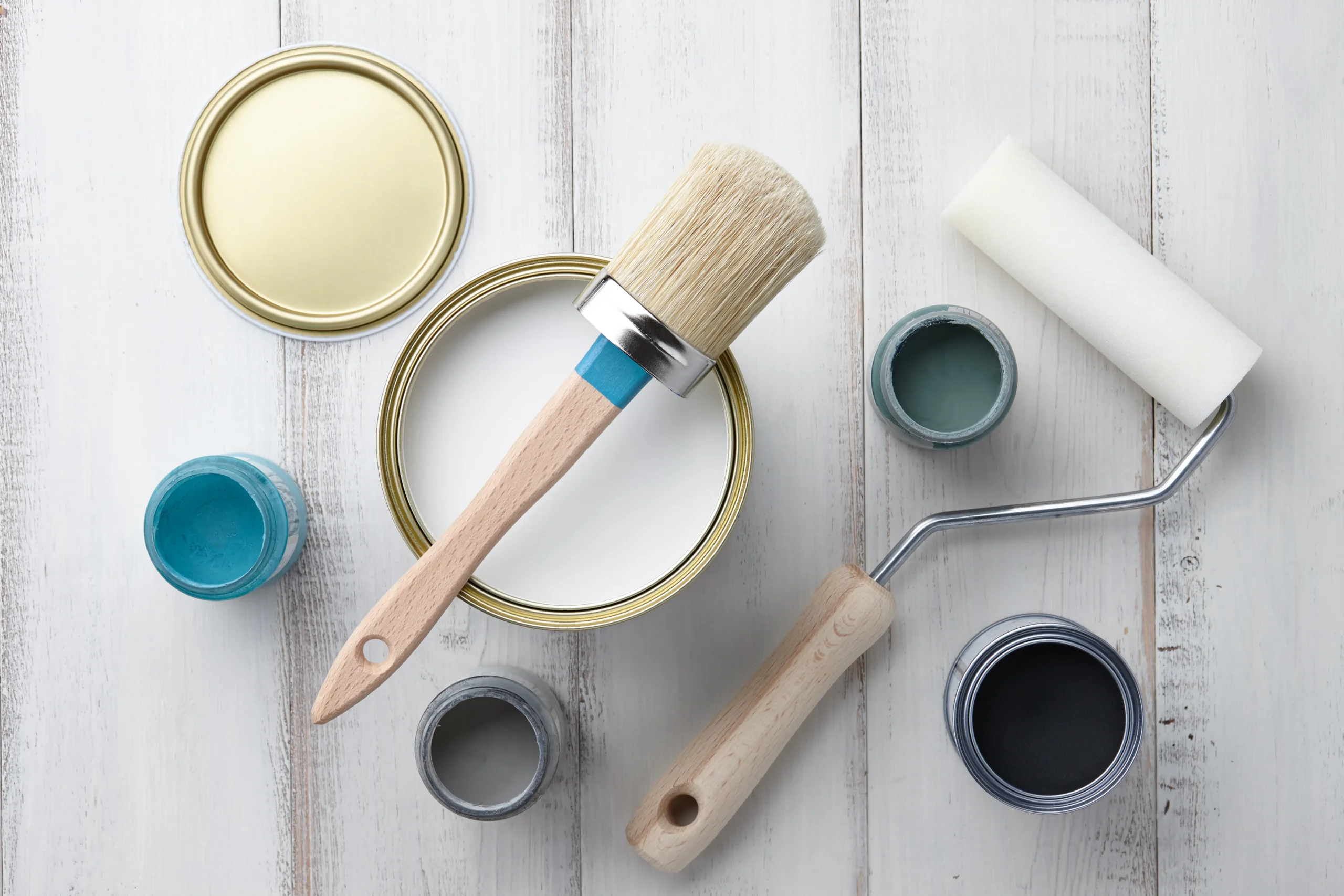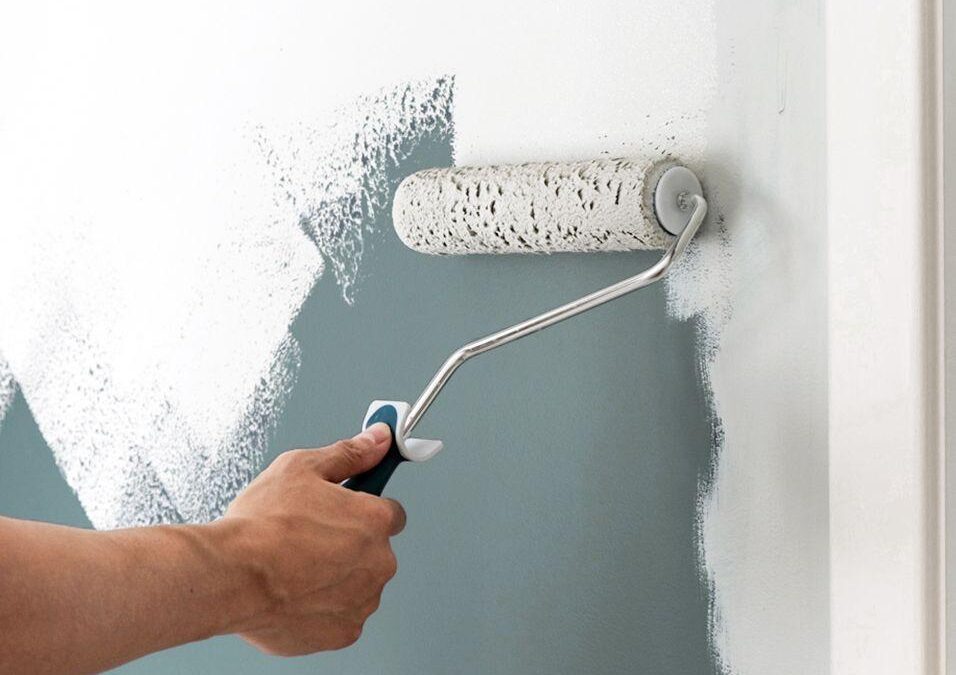How to Paint Over a Dark Color with Only Two Coats By ColorKraft Homes
ColorKraft Homes’ painting method is a revolutionary approach to painting that ensures a professional and long-lasting finish. This method combines the use of high-quality materials, proper surface preparation, and expert application techniques to achieve exceptional results. Whether you are painting the interior or exterior of your home, ColorKraft Homes’ method will provide you with a beautiful and durable finish that will stand the test of time.
One of the key benefits of using ColorKraft Homes’ painting method is the attention to detail and thoroughness of the process. This method takes into account every step of the painting process, from surface preparation to final touch-ups. By following this method, you can be confident that your paint job will be flawless and will last for years to come.
Key Takeaways
- ColorKraft Homes’ painting method ensures a smooth and even finish for your space.
- Proper surface preparation is crucial for optimal paint adhesion and longevity.
- Choosing the right paint type and finish is important for achieving the desired look and durability.
- Applying primer before painting can improve adhesion and coverage, leading to better results.
- Drying time and sanding between coats can help achieve a flawless finish, and proper clean up and maintenance can extend the life of your paint job.
Preparing the Surface for Painting
Surface preparation is a crucial step in any painting project. It ensures that the paint adheres properly to the surface and provides a smooth and even finish. Before starting your painting project, it is important to thoroughly clean the surface to remove any dirt, dust, or grease. This can be done using a mild detergent and water, or a specialized cleaner for more stubborn stains.
After cleaning, it is important to repair any cracks, holes, or imperfections in the surface. This can be done using a patching compound or spackling paste. Once the repairs are complete, it is important to sand the surface to create a smooth and even base for the paint. This can be done using sandpaper or a sanding block.
Choosing the Right Paint for the Job
Choosing the right paint for your project is essential for achieving a professional finish. There are several factors to consider when selecting paint, including the type of surface you are painting, the desired finish, and any specific requirements or restrictions.
There are several types of paint available on the market, including latex, oil-based, and specialty paints. Latex paint is the most commonly used type of paint and is suitable for most interior and exterior surfaces. It is easy to clean up, dries quickly, and has low levels of volatile organic compounds (VOCs).
Oil-based paint is more durable and provides a smoother finish, but it takes longer to dry and has a stronger odor. Specialty paints, such as enamel or epoxy paints, are designed for specific surfaces or applications and may require additional preparation or application techniques.
Primer Application for Optimal Results
Using a primer before painting is essential for achieving optimal results. Primer helps to seal the surface, provide a smooth base for the paint, and improve adhesion. It also helps to prevent stains from bleeding through the paint and enhances the durability of the finish.
There are several types of primer available, including water-based, oil-based, and shellac-based primers. Water-based primers are the most commonly used and are suitable for most surfaces. They are easy to clean up, have low levels of VOCs, and dry quickly.
Oil-based primers are more durable and provide better adhesion, but they take longer to dry and have a stronger odor. Shellac-based primers are excellent for sealing stains and preventing bleed-through, but they can be difficult to work with due to their fast drying time.
To apply primer, start by stirring it thoroughly to ensure an even consistency. Then, use a brush or roller to apply a thin coat of primer to the surface. Allow the primer to dry completely before applying the first coat of paint.
First Coat Application Techniques
Applying the first coat of paint requires careful attention to detail and proper technique. Start by stirring the paint thoroughly to ensure an even consistency. Then, use a brush or roller to apply a thin coat of paint to the surface.
When using a brush, start by cutting in the edges and corners of the surface. This can be done by using a smaller brush to paint a straight line along the edges, and then filling in the rest of the surface with a larger brush. When using a roller, start by applying paint in a “W” or “M” pattern to ensure even coverage.
It is important to avoid overloading the brush or roller with paint, as this can lead to drips and uneven coverage. Instead, apply a thin coat of paint and allow it to dry completely before applying additional coats.
Drying Time and Sanding in Between Coats

Drying time is an important factor to consider when painting multiple coats. It is important to allow each coat of paint to dry completely before applying the next coat. This ensures that the paint adheres properly and provides a smooth and even finish.
The drying time for paint can vary depending on several factors, including the type of paint, temperature, humidity, and ventilation. In general, latex paint dries to the touch within one to two hours and can be recoated after four hours. Oil-based paint takes longer to dry, typically requiring 24 hours before it can be recoated.
In between coats, it is important to sand the surface to create a smooth and even base for the next coat of paint. This can be done using fine-grit sandpaper or a sanding block. Sanding also helps to remove any imperfections or brush marks from the previous coat of paint.
Second Coat Application Techniques
Applying the second coat of paint requires the same attention to detail and proper technique as the first coat. Start by stirring the paint thoroughly to ensure an even consistency. Then, use a brush or roller to apply a thin coat of paint to the surface.
When using a brush, start by cutting in the edges and corners of the surface, just as you did with the first coat. When using a roller, apply the paint in a smooth and even motion, working from top to bottom and from one side to the other.
It is important to avoid overloading the brush or roller with paint, as this can lead to drips and uneven coverage. Instead, apply a thin coat of paint and allow it to dry completely before applying additional coats.
Achieving a Smooth and Even Finish
Achieving a smooth and even finish requires proper technique and the right tools. One technique that can help is called “feathering.” This involves blending the edges of each stroke of paint to create a seamless finish. To feather, start by applying paint to the surface with a brush or roller. Then, use a dry brush or roller to lightly blend the edges of each stroke.
Another technique that can help achieve a smooth and even finish is called “tipping off.” This involves lightly brushing over the painted surface with a dry brush to remove any brush marks or imperfections. Tipping off should be done immediately after applying the paint, while it is still wet.
The tools you use can also make a difference in achieving a smooth and even finish. For example, using a high-quality brush or roller can help to minimize brush marks or roller lines. It is also important to use the right size brush or roller for the job, as using a brush or roller that is too small or too large can result in an uneven finish.
Clean Up and Maintenance Tips

After completing your painting project, it is important to clean up properly to ensure the longevity of your painted surfaces. Start by cleaning your brushes and rollers with warm soapy water or a specialized brush cleaner. Rinse them thoroughly and allow them to dry completely before storing.
If you used oil-based paint, you will need to clean your brushes and rollers with mineral spirits or paint thinner instead of water. Follow the manufacturer’s instructions for proper disposal of any cleaning materials.
To maintain your painted surfaces, it is important to regularly clean them with a mild detergent and water. Avoid using abrasive cleaners or scrub brushes, as these can damage the paint. It is also important to address any stains or spills promptly to prevent them from becoming permanent.
Enjoy Your Newly Painted Space with ColorKraft Homes’ Method
In conclusion, ColorKraft Homes’ painting method is a comprehensive approach to painting that ensures a professional and long-lasting finish. By following the steps outlined in this article, you can achieve exceptional results in your painting projects.
From surface preparation to final touch-ups, ColorKraft Homes’ method takes into account every aspect of the painting process. By using high-quality materials, proper techniques, and attention to detail, you can transform your space into a beautiful and inviting environment.
 So why wait? Try ColorKraft Homes’ painting method for your next project and enjoy the benefits of a flawless and durable finish. Whether you are painting the interior or exterior of your home, this method will provide you with the results you desire. Happy painting!
So why wait? Try ColorKraft Homes’ painting method for your next project and enjoy the benefits of a flawless and durable finish. Whether you are painting the interior or exterior of your home, this method will provide you with the results you desire. Happy painting!
If you’re looking for expert advice on painting over a dark color with only two coats, ColorKraft Homes has got you covered. In their informative article, they provide step-by-step instructions and valuable tips to help you achieve a flawless finish.
For more information on ColorKraft Homes and their services, visit their website at About. Whether you’re in Seal Beach or anywhere else, their team of professional painters is ready to assist you. Learn more about their Seal Beach house painters
Cities We Serve
Anaheim Painting Contractors | Costa Mesa Painting Contractors | Fullerton Painting Contractors | Huntington Beach Painting Contractors | Laguna Hills Painting Contractors
FAQs – Paint Over a Dark Color

What is the article about?
The article is about how to paint over a dark color with only two coats.
Who wrote the article?
The article was written by ColorKraft Homes.
What is the benefit of painting over a dark color with only two coats?
The benefit of painting over a dark color with only two coats is that it saves time and money.
What materials are needed to paint over a dark color with only two coats?
The materials needed to paint over a dark color with only two coats include primer, paint, paint roller, paintbrush, and painter’s tape.
What is the first step in painting over a dark color with only two coats?
The first step in painting over a dark color with only two coats is to clean the surface to be painted.
What is the second step in painting over a dark color with only two coats?
The second step in painting over a dark color with only two coats is to apply a coat of primer.
What is the third step in painting over a dark color with only two coats?
The third step in painting over a dark color with only two coats is to apply the first coat of paint.
What is the fourth step in painting over a dark color with only two coats?
The fourth step in painting over a dark color with only two coats is to apply the second coat of paint.
What is the final step in painting over a dark color with only two coats?
The final step in painting over a dark color with only two coats is to remove the painter’s tape and let the paint dry completely.
Page deisgn by Website Creators Near Me


